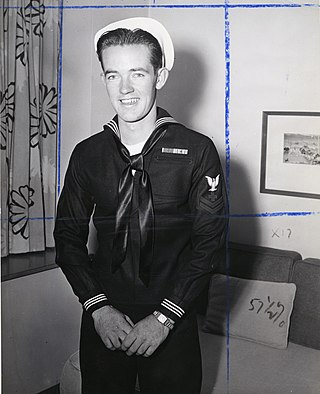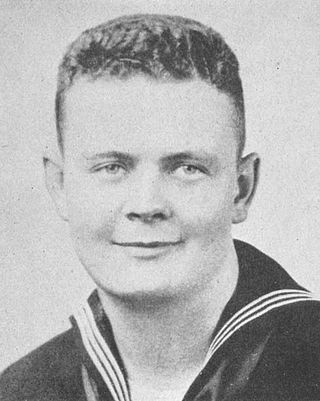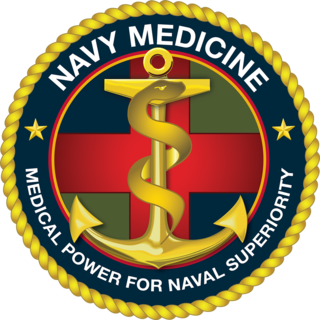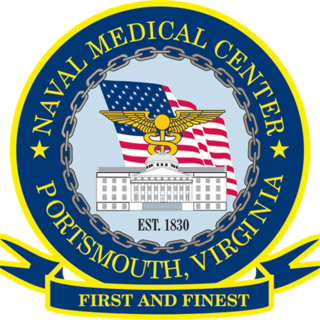
A hospital ship is a ship designated for primary function as a floating medical treatment facility or hospital. Most are operated by the military forces of various countries, as they are intended to be used in or near war zones. In the 19th century, redundant warships were used as moored hospitals for seamen.

Marine Corps Base Camp Pendleton is the major West Coast base of the United States Marine Corps and is one of the largest Marine Corps bases in the United States. It is on the Southern California coast in San Diego County and is bordered by Oceanside to the south, San Clemente and Orange County to the north, Riverside County to the northeast, and Fallbrook to the east.

The Santa Margarita River which with the addition of what is now Temecula Creek, was formerly known as the Temecula River, is a short intermittent river on the Pacific coast of southern California in the United States, approximately 30.9 miles (49.7 km) long. One of the last free-flowing rivers in southern California, it drains an arid region at the southern end of the Santa Ana Mountains, in the Peninsular Ranges between Los Angeles and San Diego.
Rancho Mission Viejo is an active 23,000 acres (9,300 ha) ranch and farm, habitat reserve, residential community, and census-designated place in South Orange County, California. Rancho Mission Viejo originated as a series of land grants to John Forster in 1845. The remaining part of Rancho Mission Viejo consists of a nearly 17,000-acre (6,900 ha) nature reserve and multiple residential communities slated to open in phases between 2010 and 2030. As of the 2020 census, it had a population of 10,378.

Robert Eugene Bush, at age 18, was the youngest member of the United States Navy in World War II to receive the nation's highest military decoration for valor, the Medal of Honor. He was awarded the medal for heroic actions "above and beyond the call of duty" while serving as hospital corpsman attached to a Marine Corps rifle company on May 2, 1945, during the Battle of Okinawa.

Rancho Santa Margarita y Las Flores was a 133,440-acre (540.0 km2) Mexican land grant in present-day northwestern San Diego County, California given by governor Juan Alvarado in 1841 to Andrés Pico and Pio Pico. The grant was located along the Pacific coast, and encompassed present-day San Onofre State Beach and Camp Pendleton. The site is now registered as California Historical Landmark #1026.

George E. Wahlen was a United States Army major who served with the United States Navy as a hospital corpsman attached to a Marine Corps rifle company in World War II and was awarded the U.S. military's highest decoration for valor, the Medal of Honor, for heroism above and beyond the call of duty during the Battle of Iwo Jima. He was an Army officer in the Korean War and was wounded in the Vietnam War.

Naval Hospital Oakland, also known as Oak Knoll Naval Hospital, was a U.S. naval hospital located in Oakland, California that opened during World War II (1942) and closed in 1996 as part of the 1993 Base Realignment and Closure program. The 167-acre (68 ha) site is bordered on three sides by Mountain Boulevard and Keller Avenue in the city's Oak Knoll section and its map coordinates are 37°46′05″N122°08′46″W.

Francis Junior Pierce was a United States Navy hospital corpsman in World War II who received the nation's highest military decoration for valor, the Medal of Honor. He was awarded the medal for heroic actions "above and beyond the call of duty" on March 15–16, 1945, while assigned to a Marine Corps infantry battalion during the Battle of Iwo Jima.

John Harlan Willis was a United States Navy hospital corpsman who was killed in action during World War II while serving with a Marine Corps rifle company. He was posthumously awarded the nation's highest military decoration for valor, the Medal of Honor, for heroic actions "above and beyond the call of duty" on February 28, 1945, during the Battle of Iwo Jima.

United States Naval Training Center Bainbridge was the U.S. Navy Training Center at Port Deposit, Maryland, on the bluffs of the northeast bank of the Susquehanna River. It was active from 1942 to 1976 under the Commander of the Fifth Naval District, based in Norfolk, Virginia.

The Bureau of Medicine and Surgery (BUMED) is an agency of the United States Department of the Navy that manages health care activities for the United States Navy and the United States Marine Corps. BUMED operates hospitals and other health care facilities as well as laboratories for biomedical research, and trains and manages the Navy's many staff corps related to medicine. Its headquarters is located at the Defense Health Headquarters in Fairfax County, Virginia. BUMED has 63,000 medical personnel and more than a million eligible beneficiaries.

The Naval Medical Center Portsmouth (NMCP), formerly Naval Hospital Portsmouth, and originally Norfolk Naval Hospital, is a United States Navy medical center in Portsmouth, Virginia, United States. It is the oldest continuously running hospital in the Navy medical system.

California during World War II was a major contributor to the World War II effort. California's long Pacific Ocean coastline provided the support needed for the Pacific War. California also supported the war in Europe. After the Japanese attack on Pearl Harbor, Hawaii, on December 7, 1941, most of California's manufacturing was shifted to the war effort. California became a major ship builder and aircraft manufacturer. Existing military installations were enlarged and many new ones were built. California trained many of the troops before their oversea deployment. Over 800,000 Californians served in the United States Armed Forces. California agriculture, ranches and farms were used to feed the troops around the world. California's long coastline also put the state in fear, as an attack on California seemed likely. California was used for the temporary and permanent internment camps for Japanese Americans. The population of California grew significantly, largely due to servicemen who were stationed at the new military bases/training facilities and mass influx of workers from around the U.S. in the growing defense industries. With all the new economy activity, California was lifted out of the great depression. Over 500,000 people moved to California from other states to work in the growing economy. California expanded its oil and mineral production to keep up with the war demand.

Borrego Valley Maneuver Area also called the Borrego Springs Naval Maneuver Area was a US Army Anti-Aircraft Training Center (AARTC) and a subcamp of Camp Callan. Located near Borrego Springs, California in San Diego County in the Imperial Valley. Opened in March 1942 and in use until August 1944, it was operated by the Western Defense Command. Marine Corps also used the site to train troops in driving army vehicles. The site was picked as it was 400 square miles, 255,840 acres, of barren desert, barren mountains, and badlands. When closed the land returned to the State of California. Built at the site were bombing stations, strafing stations, and rocket targets. Also installed was Anti-Aircraft Artillery for training. First week troop did dry run training and the second week live-fire training. Ammo fired was from .33 to 90mmm. The US Navy trained in the bombing, gunnery, and rocketry. California Institute of Technology help with the rocket training. The air support the base was Naval Outlying Landing Field Clark's Dry Lake, Naval Outlying Field, Ocotillo Dry Lake and Borrego Hotel Naval Outlying Landing Field.

Casa del Rey Hotel was a resort hotel in Santa Cruz, California. During World War II the hotel was converted to the Naval Convalescent Hospital, Santa Cruz. The hotel was built in 1911 by Fred Swanton on Beach Street as a Santa Cruz Boardwalk development plan. The Resort Hotel had: a pool; gardens; and a grand pedestrian bridge to cross the street to visit the beach. The hotel was at about 500 Beach Street and Cliff Street. In addition to the hotel, there were built Cottage apartments. Later after the war the hotel became a senior citizen housing. In the 1989 Loma Prieta earthquake there was serious damage to the hotel and was taken down. The site now is the parking lot across the street from the Santa Cruz Beach Boardwalk amusement park.

Naval Hospital Camp Pendleton is a large US Navy medical treatment facility in Oceanside, California, part of the United States' Military Health System. Located on Camp Pendleton in Camp Pendleton South, California in San Diego County. The current hospital operates in a 500,000-square-foot, four-story building that opened on January 31, 2014. The new complex was completed under the American Recovery and Reinvestment Act of 2009 by the Naval Facilities Engineering Command. A groundbreaking ceremony was held on December 2, 2010, and construction was completed on October 17, 2013.

VA Long Beach Healthcare System, former Naval Hospital Long Beach is a large medical treatment facility in Long Beach, California. The Veterans Administration Hospital operates the hospital on 100 acres of land at 5901 E 7th St, Long Beach. The hospital has primary care, tertiary care, and long-term care in areas of medicine, surgery, psychiatry, physical medicine and rehabilitation, neurology, oncology, dentistry, spinal cord injury, geriatrics, blind rehabilitation and extended care. The VA Hospital opened on June 1, 1950.

Naval Base Noumea was a major United States Navy sea and air base at Nouméa, New Caledonia. Naval Base Noumea was built at Noumea Harbor. Noumea was picked for a Naval Base as it was beyond the range of Japanese land-based planes. Noumea is on the east side the Coral Sea, 1,469 km, from Brisbane, Australia. The Base was built during World War II to support the many ships and aircraft fighting and patrolling in the South West Pacific theatre of war as part of the Pacific War. Naval Base Noumea had anchorage for large ships. Noumea was protected against submarine attack by ring of islands and Naval minefields. At its peak 50,000 Troops were stationed at Naval Base Noumea. New Caledonia has been a colony of France since 1853. Noumea is the capital City of New Caledonia on the southwest end of the island. On November 8, 1942, US Navy South Pacific headquarter moved to Noumea.

Naval Base Hawaii was a number of United States Navy bases in the Territory of Hawaii during World War II. At the start of the war, much of the Hawaiian Islands was converted from tourism to a United States Armed Forces base. With the loss of US Naval Base Philippines in Philippines campaign of 1941 and 1942, Hawaii became the US Navy's main base for the early part of the island-hopping Pacific War against Empire of Japan. Naval Station Pearl Harbor was founded in 1899 with the annexation of Hawaii.
























